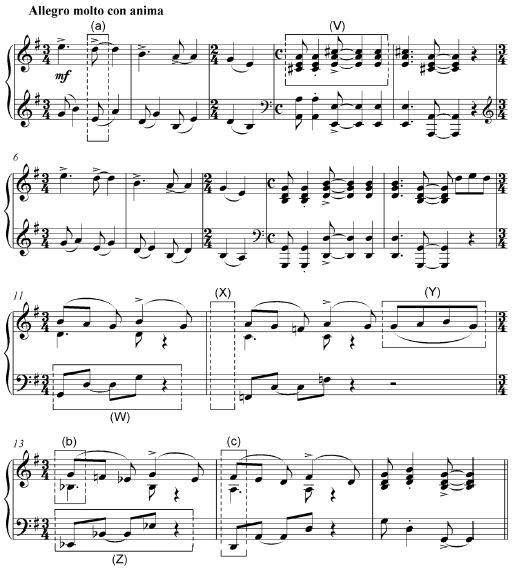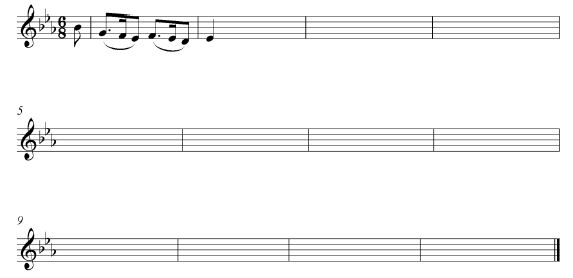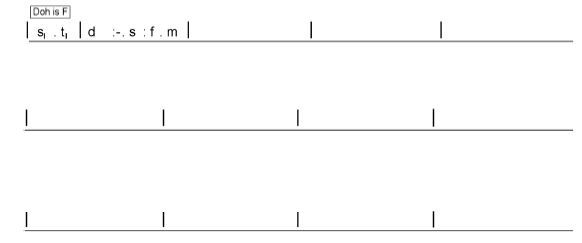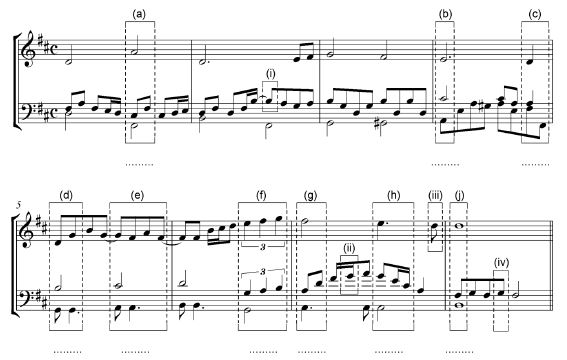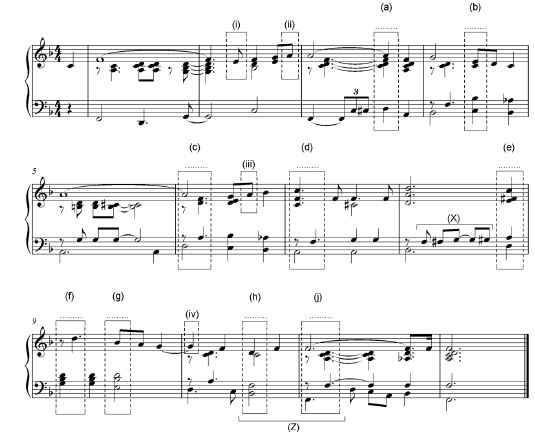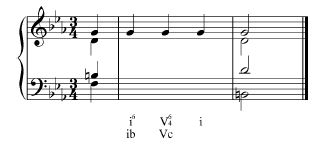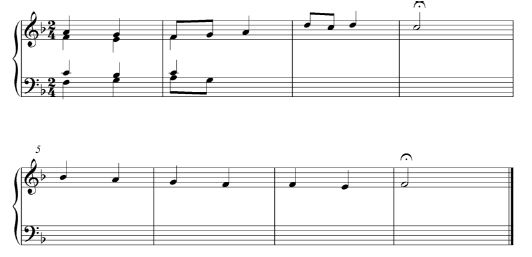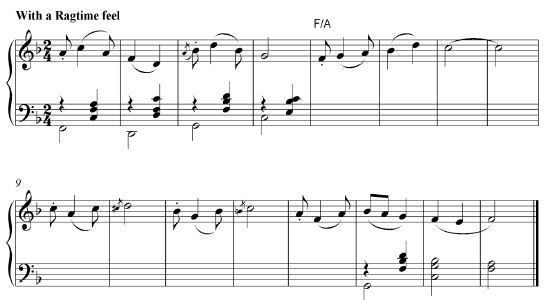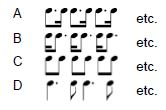MUSIC PAPER 1 GRADE 12 QUESTIONS - NSC PAST PAPERS AND MEMOS NOVEMBER 2021
Share via Whatsapp Join our WhatsApp Group Join our Telegram GroupINSTRUCTIONS AND INFORMATION
- This question paper consists of FIVE sections, namely SECTIONS A, B, C, D and E.
- SECTIONS A and B are COMPULSORY.
- SECTION C: INDIGENOUS AFRICAN MUSIC (IAM), SECTION D: JAZZ and SECTION E: WESTERN ART MUSIC (WAM) are choice questions. Answer only ONE of these sections (SECTION C OR D OR E).
- Write ALL music notation in SECTION A in pencil and ALL written text in blue or black ink on this question paper.
- Answer SECTION B and SECTION C OR D OR E in blue or black ink in the ANSWER BOOK provided.
- Number the answers correctly according to the numbering system used in this question paper.
- The last page of this question paper is manuscript paper intended for rough work. Candidates may NOT remove this page.
- Candidates may NOT have access to any musical instrument for the duration of this examination.
- Candidates must take note of the mark allocation for each question to provide enough information in their answers.
- Write neatly and legibly.
SECTION A: THEORY OF MUSIC (COMPULSORY) (90 minutes)
Answer SECTION A on the QUESTION PAPER.
Answer QUESTION 1
AND QUESTION 2.1 OR 2.2 OR 2.3
AND QUESTION 3.1 OR 3.2
AND QUESTION 4.1 OR 4.2.
QUESTION 1 (25 minutes)
Study the extract below and answer the questions that follow.
1.1 How fast should this extract be performed? Make a cross (X) in the appropriate block.
| Moderately fast and with passion | Very lively andwith energy | As fast as humanly possible and with spirit |
(1)
1.2 What type of scale is formed by the notes in the upper part of bars 1 to 3? (1)
1.3 Name the interval at (a) according to type and distance. (1)
1.4 Notate the inversion of the interval at (b). (1)
1.5 Name the triad at (c) according to type and position. (1)
1.6 Write the triad at (c) in the alto clef in first inversion in close position. Use minims. (1)
1.7 Comment on the key(s) of this piece. (1)
1.8 Compare the textures in bars 6 to 8 with those used in bars 9 to 10 and comment. (1)
1.9 Identify the rhythmic feature used at (V). (1)
1.10 Rewrite (W) in the corresponding compound time. Insert the new time signature. Ensure that the music sounds the same. (2)
1.11 Insert the correct time signature in the space provided at (X) on the score. (1)
1.12 Write a variation of the motive at (Y). Do NOT write a sequence. (2)
[15]
1.13 Rewrite (Z) with an alternative rhythmic grouping.
Do NOT change the sound of the music.
(1)
QUESTION 2 (25 minutes)
Answer QUESTION 2.1 OR QUESTION 2.2 OR QUESTION 2.3.
2.1 Complete the opening below to form a twelve-bar melody in ternary form for any single-line melodic instrument of your choice. Name the instrument and supply a suitable tempo indication. Add dynamic and articulation indications in appropriate places.
Instrument: __________________________
Tempo: __________________________
The melody will be marked according to the criteria below:
| DESCRIPTION | MAX. | MARK |
| Form and cadential points | 3 | |
| Correctness: Note stems, beats per bar, accidentals, spacing, grouping | 2 | |
| Quality: Suitability of instrument, tempo, articulation, dynamics and musicality | 10 | |
| TOTAL | 15 |
[15]
OR
2.2 Complete the opening below to form a twelve-bar melody in ternary form for any single-line melodic instrument of your choice. Name the instrument and supply a suitable tempo indication. Add dynamic and articulation indications at appropriate places.
Instrument: __________________________
Tempo: __________________________
The melody will be marked according to the criteria below:
| DESCRIPTION | MAX. | MARK |
| Form and cadential points | 3 | |
| Correctness: Note stems, beats per bar, accidentals, spacing, grouping | 2 | |
| Quality: Suitability of instrument, tempo, articulation, dynamics and musicality | 10 | |
| TOTAL | 15 |
[15]
OR
2.3 Complete the opening below in sol-fa notation to form a twelve-bar melody in ternary form for voice. Name the voice type and supply a suitable tempo indication. Add dynamic indications at appropriate places. Do NOT add lyrics.
Voice type: __________________________
Tempo: __________________________
The melody will be marked according to the criteria below:
| DESCRIPTION | MAX. | MARK |
| Form and cadential points | 3 | |
| Correctness: Sol-fa notation, colons, semicolons and dashes | 2 | |
| Quality: Suitability of range, tempo, dynamics and musicality | 10 | |
| TOTAL | 15 |
[15]
QUESTION 3 (10 minutes)
Answer EITHER QUESTION 3.1 OR QUESTION 3.2.
3.1 Study the extract below and answer the questions.
3.1.1 Figure the chords at (a) to (h) on the score using Roman numerals, e.g. E: viio6/viiob. (8)
3.1.2 Name the final cadence and figure the last chord at (j) on the score. (2)
3.1.3 Name the types of non-chordal notes at (i) to (iv).(4)
3.1.4 Explain the G# in bar 3. (1)
[15]
OR
3.2 Study the extract below and answer the questions.
3.2.1 Identify the chords at (a) to (h) and write chord symbols in the spaces above the chords, e.g. Bb/D. (8)
3.2.2 Name the cadence which is formed at (Z) and write the chord symbol at (j) on the score. (2)
3.2.3 Name the types of non-chordal notes at (i) to (iv). (4)
3.2.4 Comment on the tenor part in bar 8 at (X). (1)
[15]
QUESTION 4 (30 minutes)
Answer EITHER QUESTION 4.1 OR QUESTION 4.2.
4.1
4.1.1 Complete the harmonic progression below in four parts by inserting a passing second inversion pattern. (3)
4.1.2 Complete the four-part vocal harmonisation below by adding the alto, tenor and bass parts.
The harmonisation will be marked according to the criteria below:
| DESCRIPTION | MAX. | MARK |
| Correctness: Notation, doubling, spacing, voice leading | 11 | |
| Chord progression: Choice of chords, correct use of cadence | 9 | |
| Quality: Musicality, non-chordal notes, awareness of style, creativity, e.g. use of cadential 6/4 progression and/or a sequence | 4 | |
| TOTAL | (24 ÷ 2) = 12 |
(12)
[15]
OR
4.2
4.2.1 Complete the harmonic progression below by filling in chords in the bass clef. Use minims. (5)
4.2.2 Complete the piece below by adding appropriate harmonic material.
Continue in the style suggested by the given material in bars 1 to 4.
The answer will be marked according to the criteria below:
| DESCRIPTION | MAX. | MARK |
| Chord progression: Choice of chords, correct use of cadence | 7 | |
| Correctness: Notation, spacing, voice leading | 9 | |
| Quality: Musicality, non-chordal notes, awareness of style, creativity, e.g. use of accidentals | 4 | |
| TOTAL | (20 ÷ 2) = 10 |
(10)
[15]
TOTAL SECTION A: 60
SECTIONS B, C, D, E: GENERAL MUSIC KNOWLEDGE (90 minutes)
SECTIONS B, C, D and E must be answered in the ANSWER BOOK.
SECTION B: GENERAL (COMPULSORY)
QUESTION 5
5.1 Choose the correct answer. Write only the letter (A–D) next to the question number (5.1.1 to 5.1.4), e.g. 5.1.5 E.
5.1.1 With which company do artists register for needletime rights?
- SAMRO
- CAPASSO
- SAMPRA
- SONY
(1)
5.1.2 The function of a publishing company is to …
- edit music scores.
- submit scores for copyright purposes.
- commission the arrangement of a music score.
- All the above-mentioned
(1)
5.1.3 Which statement is FALSE?
The composer financially benefits from a copyrighted work …
- when the work has been registered and performed live.
- when the work is plagiarised.
- when the work has been registered and is played over the radio.
- for 50 years after her/his death.
(1)
5.1.4 Which statement is TRUE?
The music industry …
- allows production of counterfeit recordings.
- uses needletime rights to penalise composers.
- creates opportunities for artists to make a living from their music.
- All the above-mentioned
(1)
5.2 What does intellectual property refer to in the music industry? (1)
5.3 Describe the role that music rights organisations have in the music industry today. (2)
5.4 Define the term mechanical rights. (1)
5.5 What procedures will you follow if you want to use an extract from a copyrighted contemporary song in your own composition? (2)
TOTAL SECTION B: 10
Answer SECTION C (IAM)
OR SECTION D (JAZZ)
OR SECTION E (WAM) in the ANSWER BOOK.
SECTION C: INDIGENOUS AFRICAN MUSIC (IAM)
QUESTION 6
6.1 Choose the correct answer. Write only the letter (A–D) next to the question number (6.1.1 to 6.1.5), e.g. 6.1.6 E.
6.1.1 A cappella means ...
- singing by a male-only group with accompaniment.
- music for voice and piano.
- choir performance with movement.
- singing without accompaniment.
(1)
6.1.2 The lyrics of Wena Wedwa by Thee Legacy are about ...
- love and divorce.
- online love.
- love versus hate.
- love and loyalty.
(1)
6.1.3 Crepitation refers to …
- soft hand clapping.
- high-pitched vocalisation.
- explosive vocal effects.
- energetic body movement.
(1)
6.1.4 Call and response refers to …
- vocal music with body movement.
- alternating singing between a soloist and group.
- solo vocal performance.
- All the above-mentioned
(1)
6.1.5 Isihlabo is an introduction for ...
- maskanda.
- isicathamiya.
- malombo.
- All the above-mentioned
(1)
6.2 Choose an album/a hit from COLUMN B that matches the artist in COLUMN A. Write only the letter (A–D) next to the question number (6.2.1 to 6.2.4) in the ANSWER BOOK, e.g. 6.2.5 E.
| COLUMN A | COLUMN B |
| 6.2.1 Philip Tabane 6.2.2 Mfaz' Omnyama 6.2.3 Joseph Shabalala 6.2.4 Mahlathini and the Mahotella Queens |
|
(4 x 1)(4)
6.3 Discuss the performance practice features of ONE of the following song/dance styles:
6.3.1 Tshikona
6.3.2 Borankana
6.3.3 Muchongolo
6.3.4 Mohobelo
6.3.5 Isitshikiza
6.3.6 Indlamu
(3)
6.4 List THREE style characteristics of mbaqanga. (3)
[15]
QUESTION 7
Isicathamiya originated from the all-night choir competitions that took place in Johannesburg and Durban over weekends.
Expand on this statement by referring to the dress code (1 mark) and stage performance (4 marks) of isicathamiya groups.
[5]
QUESTION 8
Write a paragraph in which you discuss the role of music in African culture. [8]
QUESTION 9
Explain how izibongo/direto is used in an African music performance.[7]
QUESTION 10
Maskanda has emerged from rural roots to develop into a popular urban style.
Write an essay in which you refer to the development of maskanda as a male performance style as well as the influence of umakhweyane/ugubhu (gourd-bow) music. Name representative artists and songs/albums in your answer.
You will be credited for the logical presentation of facts and the structure of your essay.
The essay will be marked according to the criteria below:
| CRITERIA | MARK ALLOCATION |
| Maskanda as a male performance style | 4 |
| The influence of umakhweyane/ugubhu (gourd-bow) music | 5 |
| Artists and songs/albums | 3 |
| Logical presentation and structure of the essay | 3 |
| TOTAL | 15 |
[15]
TOTAL SECTION C: 50
OR
Answer SECTION C (IAM)
OR SECTION D (JAZZ)
OR SECTION E (WAM) in the ANSWER BOOK.
SECTION D: JAZZ
QUESTION 11
11.1 Choose the correct answer. Write only the letter (A–D) next to the question number (11.1.1 to 11.1.5), e.g. 11.6 E.
11.1.1 Which ONE of the following rhythmic patterns is the 'skiffle'-like beat used in kwela?
(1)
11.1.2 The lyrics of Jikela Emaweni by the Manhattan Brothers is about ...
- men working in the mines.
- a gospel message.
- missing home.
- protesting women.
(1)
11.1.3 Which ONE of the following represents the E minor seventh chord?
- Eo7
- EM7
- Em7
- E+7
(1)
11.1.4 Which ONE of the following is NOT a transposing instrument?
- Bass clarinet
- Trumpet in Bb
- Alto saxophone
- Flute
(1)
11.1.5 Comping in jazz music is best described as …
- the accentuation of weak beats in a measure.
- rhythmic chordal accompaniment on the piano.
- singing of nonsense syllables instead of words.
- improvisation by a solo instrumentalist.
(1)
11.2 Insert the correct information at (a) and (b).
| KWELA | MBAQANGA | |
| Tonality | (a) | Major/pentatonic |
| Lead instrument | Penny whistle | (b) |
(2)
11.3 Choose a piece from COLUMN B that matches the artist in COLUMN A. Write only the letter (A–D) next to the question number (11.3.1 to 11.3.4) in the ANSWER BOOK, e.g. 11.3.5 E.
| COLUMN A | COLUMN B |
| 11.3.1 The Jazz Epistles 11.3.2 Feya Faku 11.3.3 Zim Nqawana 11.3.4 Miriam Makeba |
|
(4 x 1) (4)
11.4 List FOUR style characteristics of mbaqanga. (4)
[15]
QUESTION 12
Write short notes on the stylistic features of The Brotherhood of Breath. [5]
QUESTION 13
Explain how Abdullah Ibrahim's piano style reflects both local (4 marks) and international influences (3 marks). In your discussion refer to a specific example from his works (1 mark).[8]
QUESTION 14
Write a paragraph in which you discuss the musical features of kwela. [7]
QUESTION 15
Write an essay on marabi music and indicate why it is regarded as an original South African jazz style of the 1930s.
Refer to the origins of instruments, instrumentation and style characteristics. Name a representative artist/band and a correlating music example.
You will be credited for the logical presentation of facts and the structure of your essay.
The essay wil be marked according to the criteria below:
| CRITERIA | MARK ALLOCATION |
| Origins of instruments | 2 |
| Instrumentation | 3 |
| Style characteristics | 5 |
| Artist/band and music example | 2 |
| Logical presentation and structure of the essay | 3 |
| TOTAL | 15 |
[15]
TOTAL SECTION D: 50
OR
Answer SECTION C (IAM)
OR SECTION D (JAZZ)
OR SECTION E (WAM) in the ANSWER BOOK.
SECTION E: WESTERN ART MUSIC (WAM)
QUESTION 16
16.1 Choose the correct answer. Write only the letter (A–D) next to the question number (16.1.1 to 16.1.5), e.g. 16.6 E.
16.1.1 A pedal point is …
- a lever pressed with the foot in order to sustain notes when playing the piano.
- only found in modern music styles.
- a note in the lowest part that is sustained against changing harmonies.
- only found in the lowest voice of an organ work. (1)
16.1.2 Which ONE of the following music terms means 'urgently accelerating'?
- Movimento
- Rubato
- Smorzando
- Stringendo (1)
16.1.3 Which ONE of the following best describes the libretto of an opera?
- Dialogue, lyrics and stage directions
- Spoken words and what is sung
- What is sung and stage directions
- Dialogue, lyrics, stage directions and the order of scenes
(1)
16.1.4 The new instrument added to Mozart's orchestra in The Magic Flute is the …
- piccolo.
- tubular bells.
- trombone.
- tuba.
(1)
16.1.5 Which ONE of the following is NOT a transposing instrument?
- Bass clarinet
- Trumpet in Bb
- Alto saxophone
- Flute
(1)
16.2 Write short notes on the concert overture. (3)
16.3 State TWO ways in which the tone poem is different from the concert overture as a genre. (2)
16.4 Explain the function of the aria in an opera. (2)
16.5 Which is the most common language used in opera? (1)
16.6 Apart from Mozart's operas, name ONE other opera and its composer. (2)
[15]
QUESTION 17
Mendelssohn incorporated Classical elements in his Hebrides Overture.
Expand on this statement by referring to the structure, orchestra type, harmony, melody and texture of this work. [5]
QUESTION 18
Discuss the characteristics of the Singspiel. Refer to general characteristics (3 marks), storyline essentials (3 marks) and musical features (2 marks). [8]
QUESTION 19
19.1 Name ONE genre in which you would find sonata form. (1)
19.2 Explain the differences between the exposition and the recapitulation in standard sonata form. You may use a table format. (6)
[7]
QUESTION 20
Beethoven's innovations in his Symphony No. 6 Op. 68 changed the existing Classical symphonic model.
Write an essay in which you discuss Beethoven's use of structure and form, instrumentation/orchestration and dynamics. Quote specific examples from the fourth and fifth movements.
You will be credited for the logical presentation of facts and the structure of your essay.
The essay will be marked according to the criteria below:
| CRITERIA | MARK ALLOCATION |
| Structure and form | 6 |
| Instrumentation/orchestration | 3 |
| Dynamics | 3 |
| Logical presentation and structure of the essay | 3 |
| TOTAL | 15 |
[15]
TOTAL SECTION E: 50
GRAND TOTAL: 120
